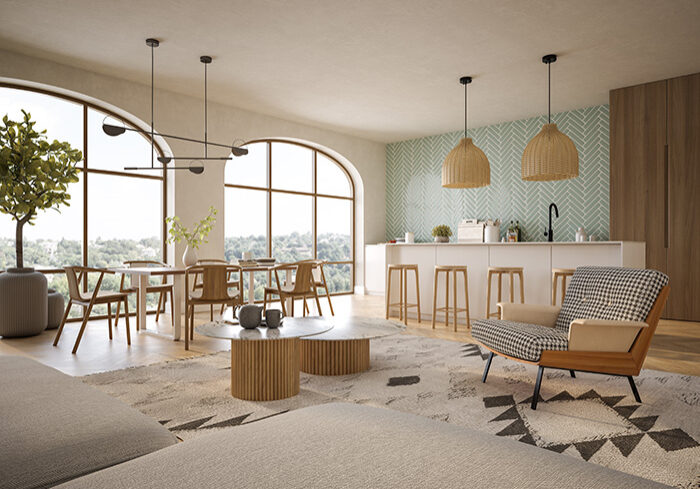Bookkeeping Cost Per Month: What Interior Designers Should Expect To Pay In 2025
You’re putting the finishing touches on a gorgeous coastal living room redesign when your phone pings. It’s your accountant asking for that missing receipt. Again. And those quarterly taxes? They were due yesterday. Your creative flow screeches to a halt as financial panic sets in.
For many interior designers, the business side of creativity often feels like an unwelcome interruption. You became a designer to transform spaces, not to spend hours reconciling bank statements or tracking down vendor invoices. Yet proper financial management is the foundation that supports your creative work.
Understanding the appropriate bookkeeping cost per month for your interior design business isn’t just about budgeting. It’s about investing in systems that free you to focus on what you do best. In this guide, we’ll look at exactly what you should expect to pay for quality bookkeeping services tailored to interior design businesses in 2025, what services that investment should include, and how to ensure you’re getting maximum value for your money.

The Unique Financial Challenges Interior Designers Face
Interior design has unique financial complexities that generic bookkeeping services often struggle to handle properly.
The Financial Complexities of Interior Design
- Client Deposits and Retainers: Unlike many service businesses, interior designers often work with substantial client deposits and retainer structures. Tracking these funds properly, especially separating them from earned income, requires specialized knowledge.
- Multi-Phase Billing: Most design projects involve multiple billing phases tied to project milestones. This creates a more complex accounts receivable situation than businesses with straightforward invoicing.
- Vendor Management: Interior designers regularly manage orders and payments across dozens of vendors for a single project. Each vendor might have different payment terms, shipping timeframes, and return policies.
- Purchase Orders: Tracking purchase orders against client approvals, vendor invoices, and actual payments requires systematic record-keeping that goes beyond basic bookkeeping.
- Sales Tax Complexities: Interior designers face particularly complex sales tax situations, especially when dealing with product sales versus design services across different jurisdictions.
The Hidden Costs of DIY Bookkeeping
Many designers attempt to handle their own books, especially when starting out. While this approach seems to save money on monthly bookkeeping costs, it usually creates higher costs somewhere else:
- Time Costs: Every hour spent reconciling accounts is an hour not spent designing or meeting with clients. For a designer billing $150-250 per hour, spending 10 hours monthly on bookkeeping represents $1,500-2,500 in opportunity cost.
- Error Costs: Without specialized accounting knowledge, mistakes happen. These can range from minor classification errors to major tax compliance issues that result in penalties or missed deductions.
- Cash Flow Problems: Without clear visibility into your finances, you might struggle to manage the timing of client payments against vendor obligations, creating cash flow crunches.
- Growth Limitations: Inadequate financial systems become increasingly problematic as your business grows, eventually creating a ceiling that prevents further expansion.
According to industry research, interior designers who invest in professional bookkeeping services generally see a 15-20% increase in profitability within the first year. Not because they’re making more money, but because they’re capturing all their earnings and expenses properly.
Making Sense Of Bookkeeping Service Pricing
Before looking at specific price points for bookkeeping services, it’s important to understand the factors that influence monthly bookkeeping cost and the common pricing models in the market.
What Factors Impact Your Monthly Bookkeeping Cost
- Business Size and Revenue: As your design business grows, your bookkeeping needs become more complex. Most bookkeeping services scale their pricing based on revenue ranges or transaction volume.
- Transaction Volume: The number of monthly transactions in your accounts significantly affects workload and, consequently, price. A designer managing multiple concurrent projects will have more transactions than one working on a single project at a time.
- Service Complexity: Basic record-keeping costs less than comprehensive financial management. Services like cash flow forecasting, profitability analysis, and strategic financial planning command higher rates than simple transaction recording.
- Industry Specialization: Bookkeepers with expertise in interior design can command premium rates because they understand industry-specific needs. However, this specialization often delivers better value despite the higher bookkeeping cost per month.
- Software Integration: If you’re using industry-specific software like Houzz Pro that requires special integration with accounting platforms like QBO, this may affect pricing.
- Financial Organization: If your current books are disorganized or require significant cleanup, expect higher initial costs until your financial systems are properly established.
How Bookkeepers Structure Their Fees
Most bookkeeping services for interior designers offer fixed monthly packages with defined service sets. This approach provides predictable bookkeeping costs per month and works well for established design businesses with relatively consistent transaction volumes.
Some bookkeepers charge by the hour, with rates typically ranging from $50-150 per hour depending on experience and specialization. This approach makes sense for initial cleanup projects, businesses with highly variable monthly workloads, or one-time financial projects.
Many bookkeeping firms serving interior designers offer tiered packages that increase in both services and price, allowing growing design firms to scale their financial support as needs evolve.
Some financial firms are moving toward value-based pricing, where fees are based not on time spent but on the value delivered to your business. While less common, this model can create strong alignment between your bookkeeper’s incentives and your business outcomes.
Bookkeeping Cost Standards
Let’s look at what interior designers should expect to pay for monthly bookkeeping services in 2025, based on industry standards and typical business models.
Average Monthly Bookkeeping Costs and The 5% Rule
For general small businesses, average monthly bookkeeping costs generally follow these patterns:
- Micro-businesses (under $250K annual revenue): $300-700 per month
- Small businesses ($250K-1M annual revenue): $700-1,500 per month
- Mid-sized businesses ($1M-5M annual revenue): $1,500-3,500 per month
A general principle in business management suggests allocating approximately 5% of gross revenue to financial management services (including bookkeeping, accounting, and financial planning). For a design firm with $300,000 in annual revenue, this amounts to about $15,000 yearly or $1,250 monthly for comprehensive financial services.
Interior design businesses face unique bookkeeping challenges that can influence monthly bookkeeping costs. Project-based accounting, inventory and purchase management, and complex sales tax scenarios mean that interior designers should expect to pay toward the higher end of the ranges mentioned above compared to other service businesses of similar size.
Scaling Services Based on Business Stage
As your interior design business evolves, so should your bookkeeping services:
Startup Phase (under $150K annual revenue):
- Monthly bookkeeping cost: $500-700
- Focus: Basic transaction recording, reconciliation, quarterly reports
Growth Phase ($150K-500K annual revenue):
- Monthly bookkeeping cost: $700-1,500
- Added focus: Cash flow management, basic financial analysis, regular check-ins
Established Phase ($500K-1.5M annual revenue):
- Monthly bookkeeping cost: $1,500-3,000
- Added focus: Profitability analysis, financial strategy, dedicated account manager
Expansion Phase (over $1.5M annual revenue):
- Monthly bookkeeping cost: $3,000+
- Added focus: Full financial management, CFO services, strategic planning
What Should Be Included At Each Price Point
Understanding what services to expect at different investment levels helps make sure you’re getting good value for your bookkeeping cost per month.
Essential Bookkeeping Services ($500-900/month)
At minimum, your monthly bookkeeping investment should cover:
- Transaction categorization and coding
- Bank and credit card reconciliation
- Basic financial statements (P&L, balance sheet, cash flow)
- Accounts receivable and payable tracking
- Quarterly tax filing preparation
Value-Added Financial Services ($900-1,800/month)
As your investment increases, expect these additional services:
- Project profitability tracking by client or project
- Purchase order management and tracking
- Cash flow forecasting and management
- Sales tax compliance across jurisdictions
- Regular financial review meetings
- Year-end tax preparation support
Strategic Financial Services ($1,800-3,500+/month)
Premium bookkeeping services expand into comprehensive financial management:
- Business performance analytics against industry benchmarks
- Pricing strategy support based on financial data
- Budget development with regular variance analysis
- CFO-level strategic guidance
- Proactive tax planning strategies
Logistis For Designers Bookkeeping Packages For Interior Designers
We’ve developed bookkeeping packages specifically for interior designers, based on our extensive experience with the unique financial needs of design businesses.
Entry Package ($799/month)
Our Entry package provides foundational bookkeeping services for emerging design firms:
- Bank and credit card reconciliation
- Basic financial statement preparation
- Quarterly financial reporting
- Quarterly sales tax filings
- Access to bookkeeping support team
This package is ideal for new design businesses establishing financial systems, part-time designers transitioning to full-time, or those with straightforward business models and relatively low transaction volumes.
Elite Package ($1,349/month)
Our Elite package adds services unique to growing design businesses:
- Monthly (rather than quarterly) financial reporting
- Dedicated client manager with interior design experience
- Monthly financial strategy calls
- Purchase order tracking and management
- Project profitability analysis
- 1099 preparation and filing
The Elite package serves established designers managing multiple simultaneous projects, design firms with employees or contractors, and businesses ready to analyze and optimize financial performance.
Elevated Package ($2,499/month)
Our premium Elevated package provides comprehensive financial management:
- Advanced financial reporting and analysis
- CFO-level strategic guidance
- Business growth planning
- Cash flow optimization
- Tax strategy development
- Custom financial dashboard development
The Elevated package is designed for design firms with $500K+ annual revenue, complex financial structures, multiple employees, and strategic growth plans.
Optimizing Your Bookkeeping Partnership
Regardless of your monthly bookkeeping budget, certain strategies can help maximize your investment’s value.
Preparation and Management Strategies
Before bringing a bookkeeper onboard, take these preparatory steps:
- Organize financial documentation and bank statements
- Document your business processes for client payments and vendor management
- Clarify specific financial goals for your design business
- Separate business and personal finances completely
Once you’ve established a bookkeeping relationship:
- Schedule regular financial reviews to discuss reports and questions
- Establish clear communication channels for optimal efficiency
- Implement secure document sharing systems
- Ask your bookkeeper to explain concepts so you build financial literacy
- Provide feedback about what information most helps your decision-making
Red Flags That Indicate Poor Value
Watch for these warning signs that your bookkeeping service isn’t delivering appropriate value:
- Consistently delayed financial reports
- Limited communication or responsiveness
- Inability to explain financial fluctuations
- Lack of strategic input beyond transaction recording
- Pattern of errors suggesting inadequate attention to detail
If these issues arise, it might be time to evaluate alternative bookkeeping solutions.
Creative Ways To Balance Bookkeeping Expenses
While quality bookkeeping requires investment, there are a few ways that can help offset this business expense.
Fee Structures and Business Practices
Interior designers have unique opportunities to build administrative costs into their client fee structures:
- Add a flat administrative fee to each client invoice (e.g., $150 per client)
- Include a 2-3% administrative fee on all product orders
- Build financial management into your retainer service components
- Allocate a portion of project management fees to cover bookkeeping
Tax and Tech Considerations
Work strategically to maximize the financial benefits of your bookkeeping investment:
- Make sure monthly bookkeeping costs are properly deducted as business expenses
- Maintain professional bookkeeping records as documentation for the IRS
- Consider prepaying annual bookkeeping services in high-income years
- Evaluate whether your business structure optimizes tax advantages
Additionally, strategic technology investments can reduce bookkeeping time and costs:
- Use receipt management apps to automate capture and categorization
- Implement project management software that integrates with accounting platforms
- Set up payment processing systems that automatically record transactions
- Deploy time tracking tools that generate invoices automatically
When To Upgrade Your Bookkeeping Services
As your interior design business evolves, these milestones often signal it’s time to increase your bookkeeping investment:
- Revenue growth of 50% or more, increasing transaction volume and complexity
- Team expansion with employees or contractors, creating new financial considerations
- Service diversification beyond pure design into product sales or other areas
- Multiple business entities requiring sophisticated management across companies
- Strategic growth plans like expansion, investor seeking, or future sale preparation
Recognizing these inflection points and proactively upgrading your financial support can prevent growing pains and position your design business for successful expansion.
Investing In Financial Clarity
Understanding appropriate bookkeeping cost per month is about investing in systems that provide the financial clarity needed to build a thriving design business. For interior designers specifically, working with financial professionals who understand your unique business model delivers value far beyond basic transaction recording.
Whether you’re just establishing your design business or leading an established firm, the right bookkeeping partnership creates financial systems that support your creative work. By selecting services aligned with your business stage and needs, you create the financial foundation necessary for sustainable growth and profitability.
Ready to explore how professional bookkeeping could transform your interior design business? Contact us to discuss your specific needs and how our specialized services can support your business goals. And don’t forget to download our free guide on ways to build a profitable design business for additional strategies to strengthen your financial foundation.
FAQs
Can I save money by handling my own bookkeeping and only hiring help for taxes?
While possible, this approach often costs more through missed deductions, errors requiring correction, and time diverted from billable design work. Most designers find greater value in consistent professional bookkeeping.
How does bookkeeping differ from accounting, and how does this affect costs?
Bookkeeping focuses on recording transactions and maintaining records, while accounting involves analyzing, reporting, and strategic financial management. Many designers benefit from a combination of both services.
Should I hire an in-house bookkeeper or outsource?
For most design firms with under $2 million in annual revenue, outsourced bookkeeping provides better value. In-house bookkeepers typically become cost-effective only for larger firms with very high transaction volumes.
How does my location affect bookkeeping costs?
While local market rates vary, many design firms now work with remote bookkeeping services, reducing location impact on pricing. Services specializing in interior design often provide better value despite potentially higher monthly costs.
What’s the minimum I should expect to pay for professional bookkeeping?
For interior design businesses, expect to invest at least $500-700 monthly for basic professional bookkeeping. Services below this price point typically lack the specialized knowledge required for design business finances.
Share On:



